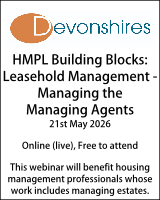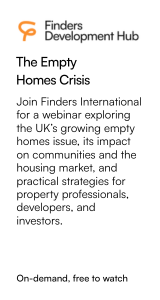“Premises” – what can and cannot be closed using a closure order
- Details
Kuljit Bhogal KC analyses an important recent High Court ruling on closure orders.
In a judgment handed down this week, Fordham J has decided that “premises” for the purposes of Part 4, Chapter 3 of the Anti-Social Behaviour, Crime and Policing Act 2014, are not an “area” or a “locality” or “any line drawn on a map” but must be somewhere which is objectively identifiable as a distinctive property or a distinctive part of a property.
Fordham J rejected the argument that the definition of “premises” found in section 92 had a universal and all-embracing meaning, §§33-36.
He also held that a Closure Order should specify the access which is permitted (as opposed to the persons who are prohibited from having access) see §§50-65.
The detail
The full judgment can be accessed here. The Council had obtained three closure orders in respect of areas which were affected by car cruising (gatherings of vehicles which were then driven and excessive and dangerous speeds without regard to other road users). The Council’s application for an extension to those orders was refused by the Magistrates and the Council appeal by way of case stated.
The areas which had been closed included highways and open parcels of land and the closure orders stated that the areas were “closed to persons…when participating in car cruising or ‘car meet’ events…”.
The Council had relied on the definition of “premises” found in section 92 which reads:
“premises” includes—
(a) any land or other place (whether enclosed or not);
(b) any outbuildings that are, or are used as, part of premises;”
(emphasis added)
Local authorities and the police can apply to close premises if the statutory tests are met. The power to close can include commercial premises including those that are licensed. It also allows the closure of residential premises, whether tenanted or owner occupied.
Closure Notices
Closure orders can be obtained following a two-stage process:
- Section 76 requires a Closure Notice to be served (section 79 includes the rules for service), and
- An application must then be made to the Magistrates Court in accordance with section 80.
In serving a Closure Notice, which can last 24-48 hours, the local authority or the police must be satisfied, on reasonable grounds, that:
(a) that the use of particular premises has resulted, or (if the notice is not issued) is likely soon to result, in nuisance to members of the public, or
(b) that there has been, or (if the notice is not issued) is likely soon to be, disorder near those premises associated with the use of those premises,
and that the notice is necessary to prevent the nuisance or disorder from continuing, recurring or occurring.
Section 76(5) contains rules about what the Closure Notice must contain and section 76(6) explains that it can only be issued where reasonable efforts have been made to inform the people who live on the premises. any person who has control or responsibility for the premises and any person who has an interest in them.
Closure orders – the application to the Magistrates Court
A court can make a Closure Order (which can prohibit access to all persons, including the owners and those habitually resident) if the test in section 80 is met:
(a) that a person has engaged, or (if the order is not made) is likely to engage, in disorderly, offensive or criminal behaviour on the premises, or
(b) that the use of the premises has resulted, or (if the order is not made) is likely to result, in serious nuisance to members of the public, or
(c) that there has been, or (if the order is not made) is likely to be, disorder near those premises associated with the use of those premises,
and that the order is necessary to prevent the behaviour, nuisance or disorder from continuing, recurring or occurring.
The Closure Order can last up to three months and be extended for a further three months (up to a maximum of six months).
Fordham J held at §32:
“ “premises” for the purposes of Part 4 Chapter 3 calls for decision-makers to focus on whether there is somewhere objectively identifiable as being a distinctive property or distinctive part of a property. That means a property objectively identifiable, in the ‘real world’, ‘on the ground’. I accept that the police, local authority or magistrates can take something which is a distinct part of an objectively identifiable property. So, it could be a floor within a block of flats or even a room in a bed and breakfast. I also accept that police, local authority or magistrates can take a building or structure. So, it could be the entire block of flats or a shopping centre. I also accept that premises can be identified so as to encompass adjoining or linked land or an adjoining or linked building or structure. Or premises can be identified which is land or a place which is open, or which is enclosed. But what, in my judgment, is always necessary is to identify somewhere, objectively identifiable ‘on the ground’ and ‘in the real world’, as a property. Beyond that, whether the facts and circumstances fit with the statutory language is a question of reasonable application for the primary decision-makers (§6 above). Above all, “premises” are not an “area”; they are not a “locality”; they are not ‘any line drawn on a map or plan’. Nor, in any event, do they include a “highway” (emphasis added)
The decision is the first case to have considered the issue of which types of premises can be closed using the powers.
Kuljit Bhogal KC is a barrister at Cornerstone Barristers. She acted for Leeds City Council and is able to provide further advice on the implications of this judgment and the use of the powers in the Anti-Social Behaviour, Crime and Policing Act 2014.
Click here to download the Judgment























